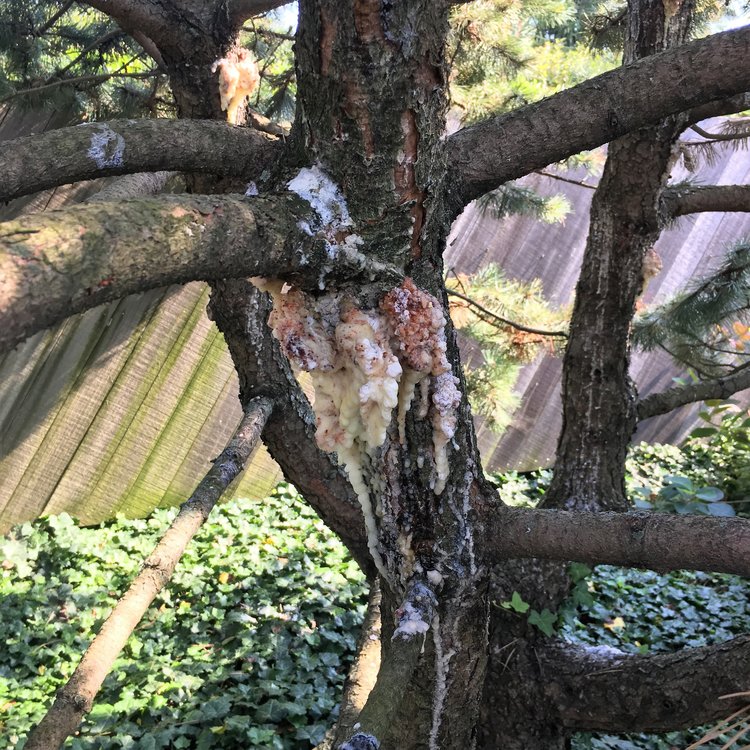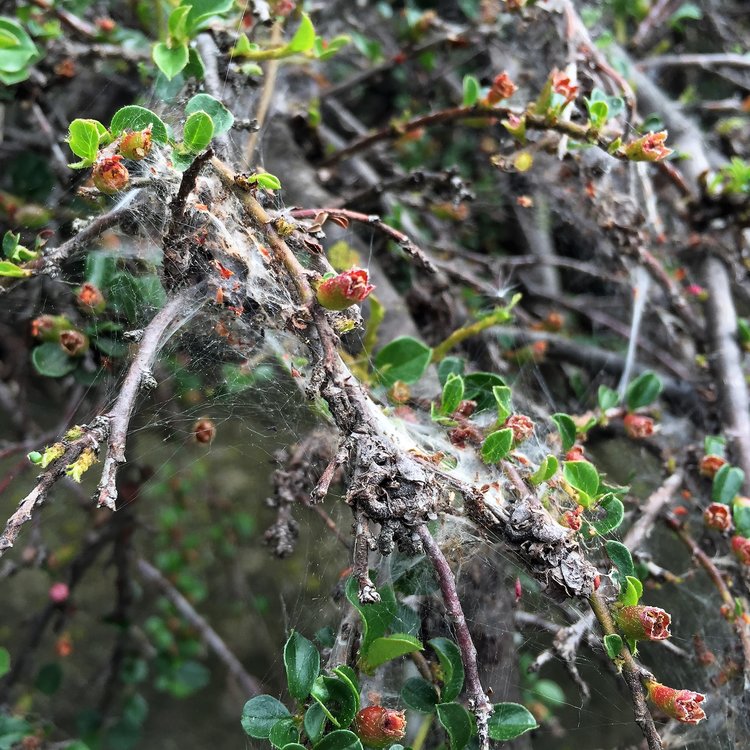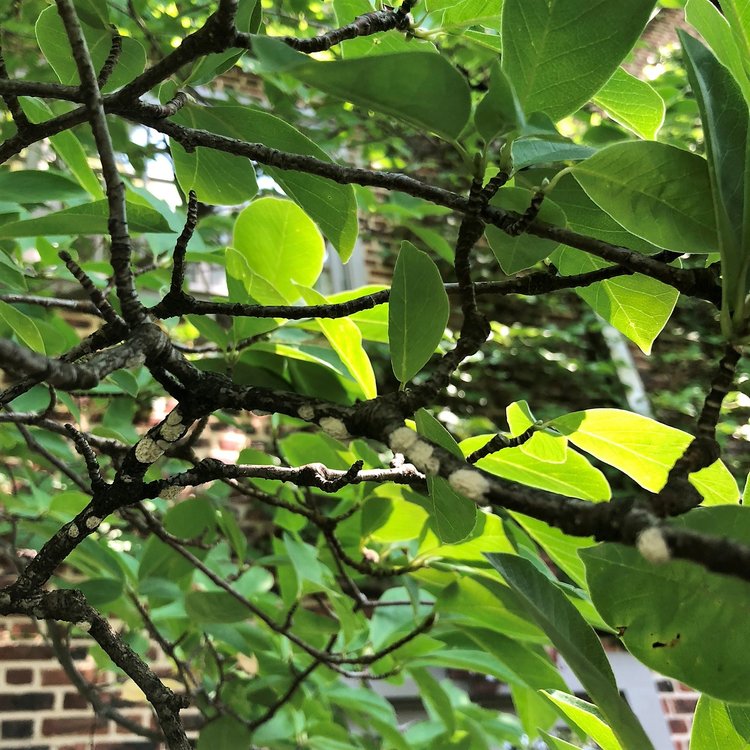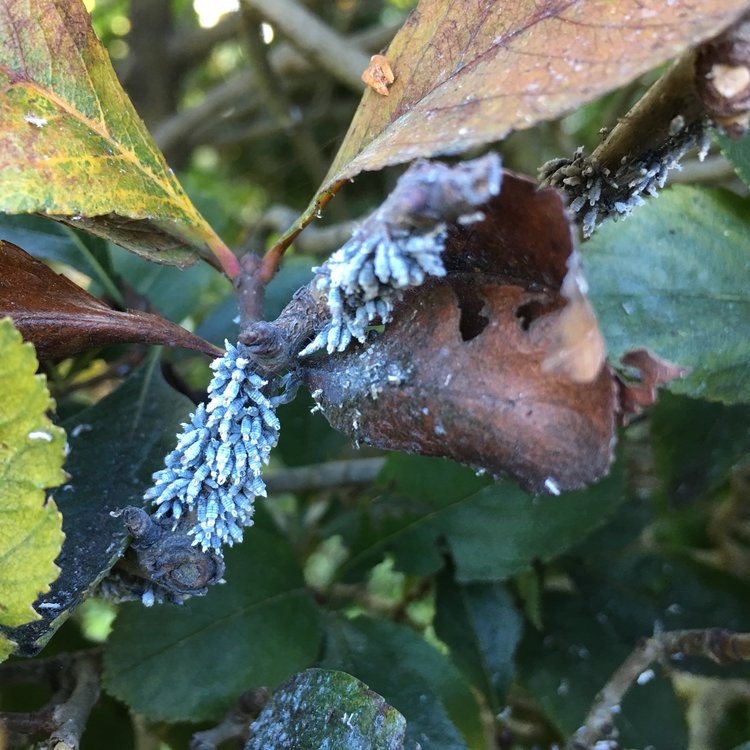Late Summer Pests

Characteristic pitch mass forming under branch whorl of mugo pine.
ZIMMERMAN PINE MOTH
This insect has an extended life cycle in which it repeatedly bores under the bark of common pine trees to feed and overwinter. There are two treatment windows timed for the larval stage of the insect; one in April and another in August. Severe damage will cause branch and whole tree death.
- What to look for: The adult moths are nocturnal and difficult to see. Look for characteristic pitch masses under large branch connections at the trunk.
- Where to look: Preferred hosts are Scots and Austrian Pines, but also Mugo and White Pine
- What to look for: A bronzing or stippling of leaves. Severe infections have visible webbing on affected branches.
- Where to look: This insect is a generalist and has over 180 preferred plant hosts! Commonly seen on Arbor Vitae and Cotoneaster.
- What to look for: Look on the underside of branches for large, whitish/cream colored bumps. Also look for blackened leaves caused by sooty mold growth feeding on the honeydew secretions.
- Where to look: Most Magnolia species are susceptible to some level.
- What to look for: check low branches for physical signs of the insects. Commonly the infestation is made apparent by heavy sooty mold presence on underlying surfaces.
- Where to look: Aphids come in a wide range of flavors and prefer a wide range of hosts

Webbing formed by two-spotted spider mite on Cotoneaster
SPIDER MITES
Spider Mites fall into two categories: either cool-season or warm-season (relating to their active weather conditions). Two-Spotted spider mites are a common, warm-season spider mite that thrives in hot and dry weather. Individual insects require a magnifying loupe to see, but in heavy infestations look like fine sand collecting on the underside of affected leaves.

Dried magnolia scale will remain attached to the tree after treatment and subsequent death.
MAGNOLIA SCALE
One of the largest and easiest to identify scales, this insect is a menace to magnolia trees. Magnolia scale is a soft-bodied scale, and can be found in large clusters along woody stems. Frequently these insects become a nuisance due to their excessive secretion of honeydew, which causes sooty mold to coat anywhere it lands. Systemic treatments are highly effective, as well as well timed spray treatments in the late summer.

Aphids come in many shapes and sizes, including differences between life stages of the same species.
APHIDS
Aphids (and most piercing-sucking insects) are at their peak levels right now. There are a wide range of aphids species that look very different. These insects will rarely kill their host, but heavy infestations can weaken plant defenses to more serious pests. Additionally, excessive honeydew production can cause surfaces below to be covered in sticky residue and sooty mold. Some more serious pathogens (bacterial and viral) have evolved to move from host to using by hitching a ride on these insects.
